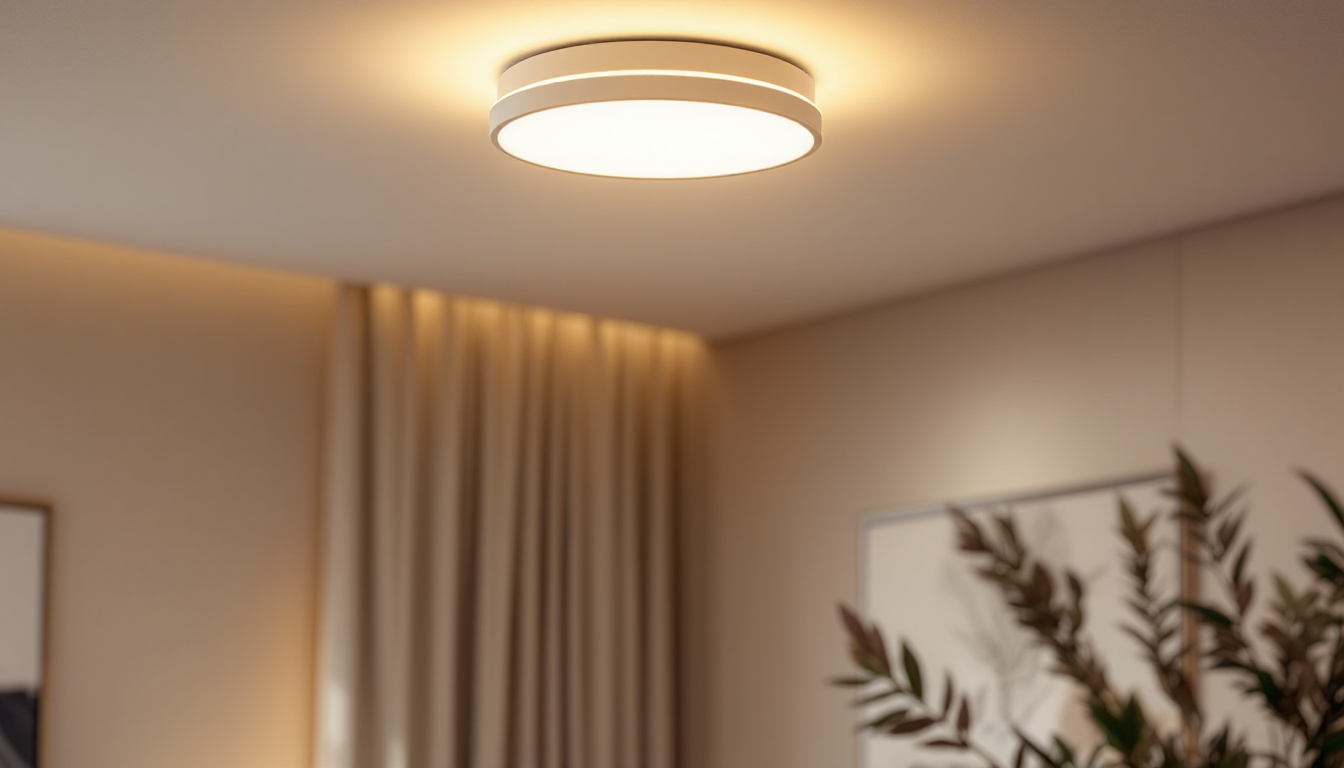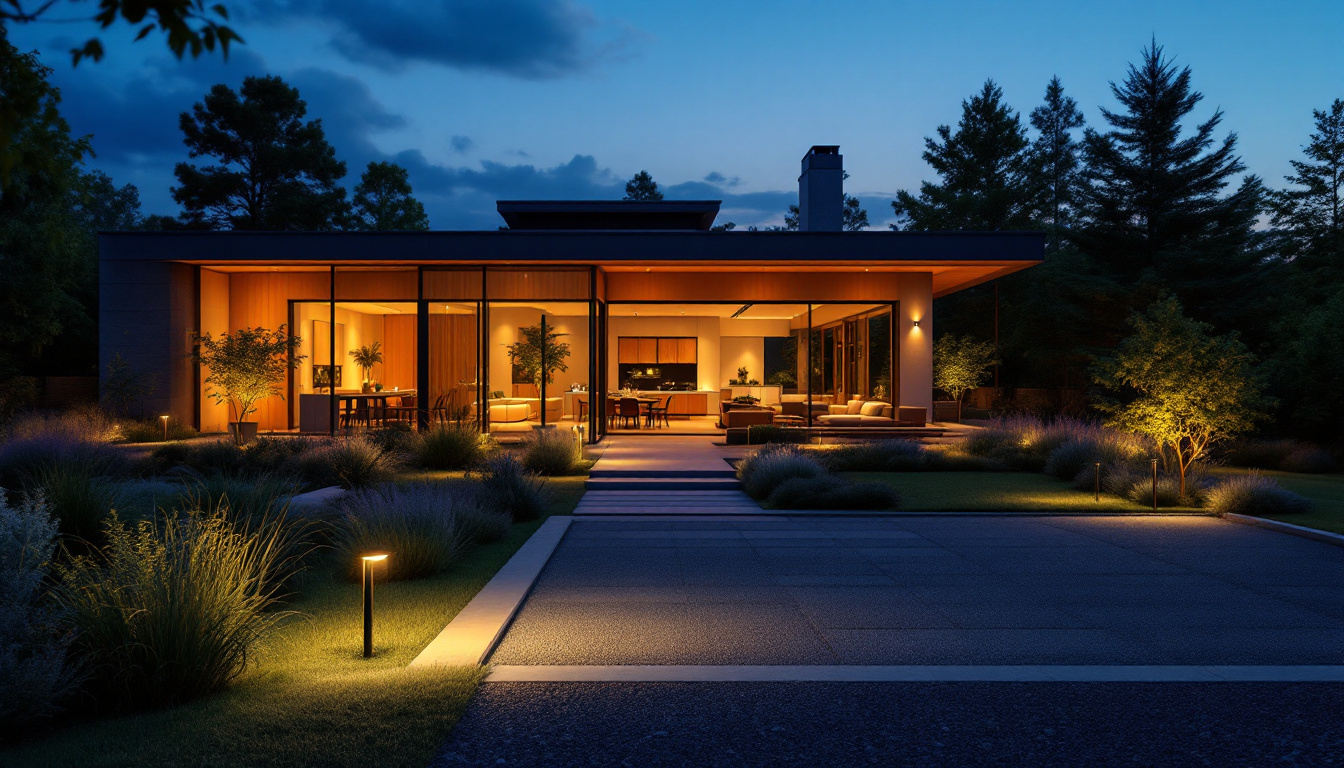
In the ever-evolving world of interior design, lighting plays a crucial role in creating ambiance, enhancing aesthetics, and ensuring functionality. Among the various lighting options available, flush ceiling lamps are gaining significant traction due to their versatility and modern appeal. This article delves into the future of lighting design and installation, focusing on flush ceiling lamps and their impact on contemporary spaces.
flush ceiling lamps are fixtures that are mounted directly against the ceiling, offering a sleek and unobtrusive lighting solution. Unlike pendant lights or chandeliers, which hang down and can dominate a room’s visual space, flush lamps provide a clean profile that can complement various interior styles.
These lamps are particularly favored in spaces with low ceilings, where hanging fixtures might create a sense of confinement. However, their appeal extends beyond practicality; they are available in a myriad of designs, materials, and finishes, making them suitable for both residential and commercial environments. From cozy living rooms to bustling office spaces, flush ceiling lamps can enhance ambiance and functionality without overwhelming the existing decor.
One of the most significant advantages of flush ceiling lamps is their design versatility. From minimalist styles that blend seamlessly with modern decor to ornate designs that add a touch of elegance, there is a flush lamp for every taste. Materials such as glass, metal, and even wood can be used to create unique fixtures that enhance the overall aesthetic of a room.
Moreover, the trend towards sustainable materials has led to an increase in eco-friendly flush ceiling lamps. Designers are now incorporating recycled materials and energy-efficient technologies, making these fixtures not only stylish but also environmentally responsible. This shift towards sustainability is not just a passing trend; it reflects a growing consumer demand for products that are both beautiful and mindful of their ecological impact. As such, many manufacturers are exploring innovative ways to produce flush ceiling lamps that utilize renewable resources, further enriching the options available to consumers.
The integration of technology into lighting design has revolutionized how flush ceiling lamps are perceived and utilized. Smart lighting solutions, which allow users to control brightness, color temperature, and even the scheduling of lights through mobile applications, are becoming increasingly popular.
These advancements not only enhance user convenience but also contribute to energy efficiency. By allowing users to tailor their lighting needs, smart flush ceiling lamps can significantly reduce energy consumption, making them an attractive option for environmentally conscious consumers. Additionally, many of these smart fixtures are designed to work with voice-activated assistants, enabling effortless control through simple commands. This seamless integration of technology into everyday life not only elevates the user experience but also encourages the adoption of smart home solutions, creating a more interconnected and efficient living environment.
Flush ceiling lamps are not just functional; they also play a pivotal role in the overall design of a space. Their strategic placement can highlight architectural features, create focal points, and influence the mood of a room. Understanding how to effectively incorporate these fixtures into design plans is essential for lighting contractors.
The right lighting can transform a space from ordinary to extraordinary. Flush ceiling lamps can be used to create various atmospheres depending on their placement and the type of bulb used. For instance, warm white bulbs can create a cozy and inviting environment, while cooler tones can evoke a sense of calm and clarity.
In open-plan spaces, flush ceiling lamps can delineate areas without the need for physical barriers. By using different styles or intensities of flush lighting, designers can subtly guide the flow of movement and interaction within a space. This versatility allows for the creation of intimate nooks within larger areas, making it possible to foster both social interaction and personal retreat. For example, a series of flush lamps arranged over a dining area can create a warm, communal atmosphere, while softer lighting in a reading corner can invite relaxation and solitude.
Flush ceiling lamps can also be strategically placed to accentuate architectural elements such as beams, moldings, or artwork. By directing light towards these features, contractors can enhance the visual appeal of a room and draw attention to its unique characteristics. This technique is particularly effective in spaces with intricate details, where the interplay of light and shadow can bring depth to the design.
In spaces with high ceilings, a combination of flush lamps and other lighting fixtures can create a layered effect, adding depth and dimension to the overall design. This approach not only enhances aesthetics but also improves functionality by ensuring adequate illumination throughout the space. Additionally, the choice of materials and finishes for flush ceiling lamps can further contribute to the design narrative. For instance, sleek metal fixtures can lend a modern touch, while vintage-inspired designs can evoke a sense of nostalgia. By thoughtfully selecting these elements, designers can create a cohesive look that resonates with the intended style of the interior, ensuring that each lamp serves as both a light source and a design statement.
For lighting contractors, understanding the nuances of flush ceiling lamp installation is crucial. Proper installation not only ensures safety but also maximizes the effectiveness of the lighting solution. Here are some key considerations to keep in mind.
Flush ceiling lamps typically require specific electrical configurations, which may vary based on the design and technology used. Contractors must ensure that the existing wiring can support the new fixtures, particularly when integrating smart lighting solutions. This includes verifying the load capacity of circuits and ensuring that dimmers or smart switches are compatible with the type of bulbs being used.
It is essential to adhere to local electrical codes and regulations during installation. This not only guarantees safety but also ensures that the lighting system operates efficiently and effectively. Additionally, contractors should consider the energy efficiency of the chosen lighting fixtures, as this can significantly impact long-term operational costs and sustainability goals for the client.
The placement of flush ceiling lamps is critical to achieving optimal lighting. Contractors should consider the size of the room, the height of the ceiling, and the intended use of the space when determining the number and placement of fixtures. For example, in a kitchen or workspace, brighter, more focused lighting may be necessary, while softer, ambient lighting might be more appropriate for living areas.
In general, a good rule of thumb is to space flush lamps evenly across the ceiling to avoid dark spots. Additionally, the distance between fixtures should be proportional to the wattage and type of bulb used to ensure consistent illumination throughout the area. It’s also beneficial to take into account any architectural features or furniture layouts that may influence light distribution, ensuring that the light enhances the overall aesthetic of the room while providing functional illumination.
As the demand for innovative lighting solutions continues to grow, several trends are emerging in the realm of flush ceiling lamps. These trends reflect changing consumer preferences and advancements in technology, shaping the future of lighting design.
With increasing awareness of environmental issues, consumers are becoming more inclined to choose sustainable lighting options. Flush ceiling lamps made from eco-friendly materials and equipped with energy-efficient LED bulbs are gaining popularity. These fixtures not only reduce energy consumption but also minimize the carbon footprint associated with lighting.
Contractors who prioritize sustainability in their offerings can appeal to a broader audience, particularly those who value environmentally responsible choices. This trend is likely to continue as more consumers seek to create eco-conscious homes and workplaces. Additionally, many manufacturers are now adopting circular economy principles, designing products that can be easily recycled or repurposed at the end of their life cycle. This shift not only helps in reducing waste but also encourages consumers to invest in long-lasting products that align with their values.
The future of flush ceiling lamps also lies in customization. Consumers are increasingly looking for lighting solutions that reflect their personal style and preferences. Manufacturers are responding by offering customizable options, such as interchangeable shades, colors, and finishes.
This trend allows contractors to provide tailored solutions that meet the unique needs of their clients. By offering a range of customizable flush ceiling lamps, lighting professionals can enhance their service offerings and create more satisfying client experiences. Furthermore, advancements in smart technology are enabling users to personalize their lighting experiences even further. With smart flush ceiling lamps, consumers can adjust brightness levels, color temperatures, and even create lighting scenes that suit different moods or activities, all controlled via smartphone apps or voice commands. This level of personalization not only enhances the aesthetic appeal of a space but also contributes to improved functionality and comfort in everyday living.
Flush ceiling lamps represent a significant advancement in lighting design and installation, offering a blend of functionality, aesthetics, and technological innovation. As the demand for versatile and sustainable lighting solutions continues to rise, these fixtures are poised to play a central role in the future of interior design.
For lighting contractors, understanding the nuances of flush ceiling lamps—from their design versatility to installation considerations—is essential for staying competitive in a rapidly changing market. By embracing emerging trends and prioritizing customer needs, contractors can position themselves as leaders in the lighting industry, ensuring they remain at the forefront of this dynamic field.
Ready to elevate your lighting installations with the sleek and sustainable flush ceiling lamps of the future? At LumenWholesale, we provide lighting contractors with the highest quality, spec-grade lighting products at the most competitive wholesale prices. Say goodbye to local distributor markups and hello to a vast selection of reliable, high-performance lighting that meets the strictest industry standards. With the added benefits of free shipping and bulk buying convenience, LumenWholesale is your go-to source for premium lighting without the premium price tag. Don’t compromise on quality or value—discover the best in wholesale lighting and make your next project shine with LumenWholesale.

Discover the essential role of ballasts in lighting systems with insights from top contractors.

Discover the essential guide to fluorescent light diffusers tailored for lighting contractors.

Discover the transformative power of outdoor LED floodlights in modern lighting installations.

Discover how lighting tape is revolutionizing the industry and helping contractors secure more projects.